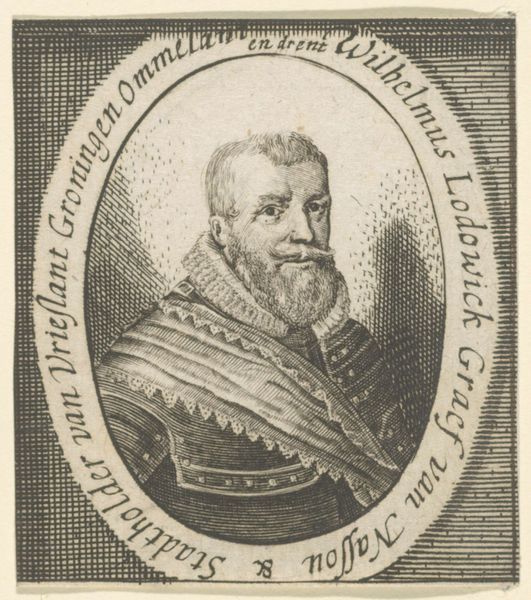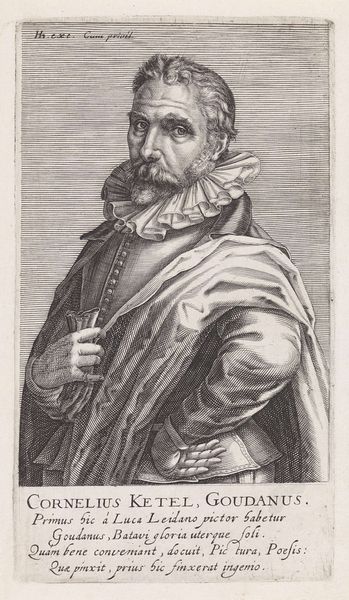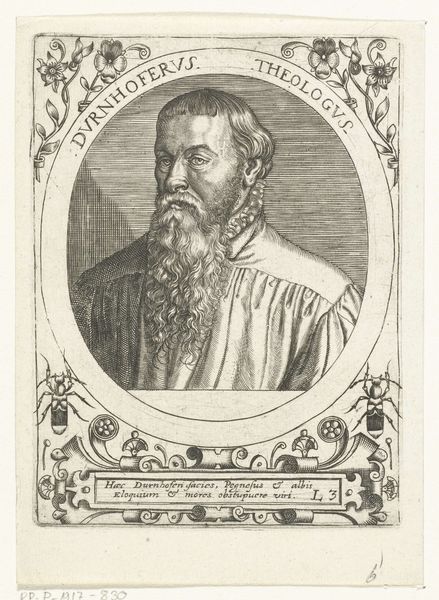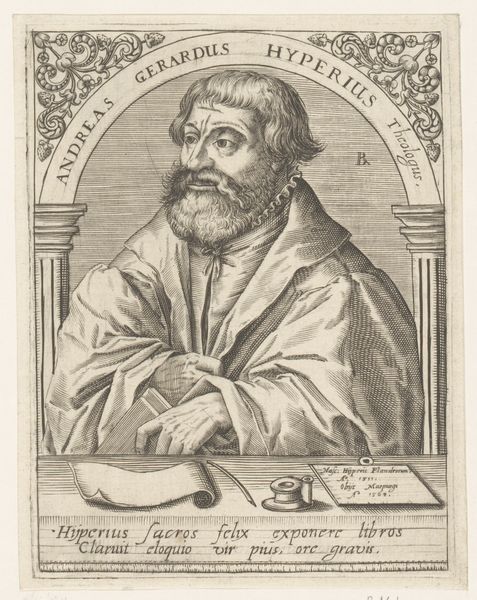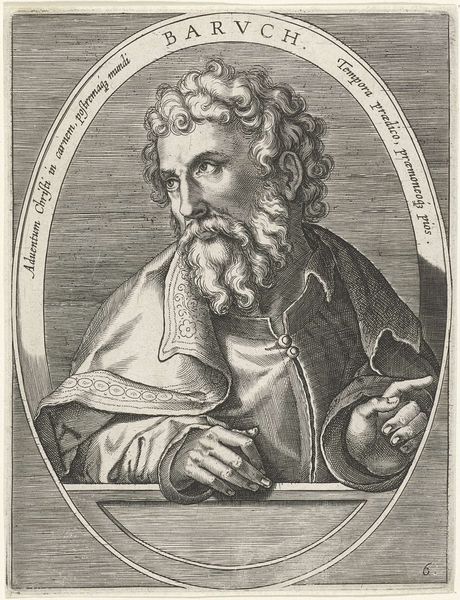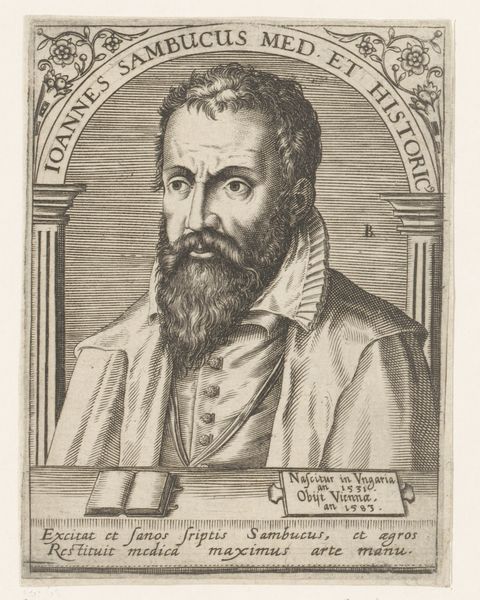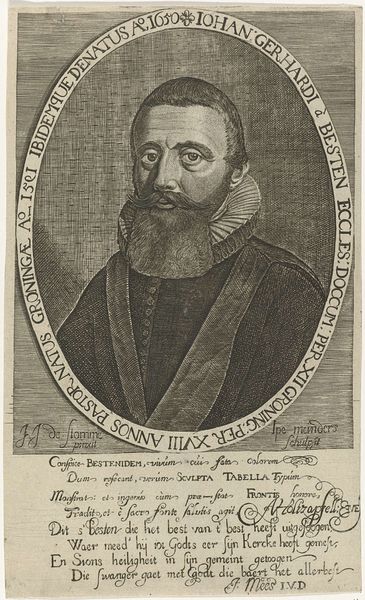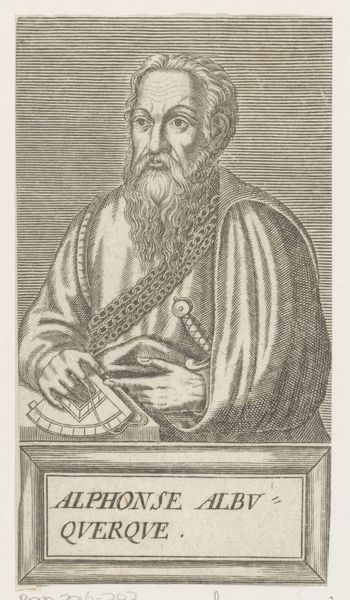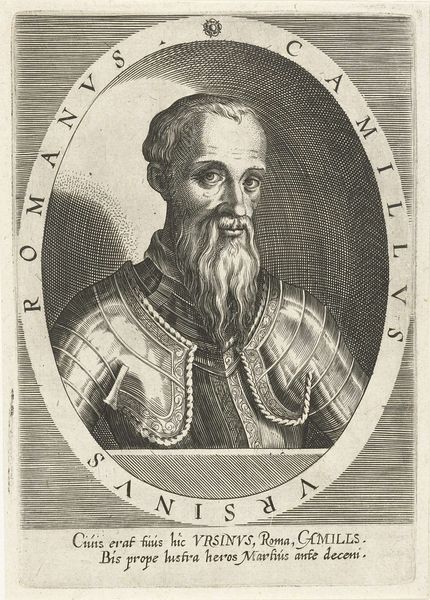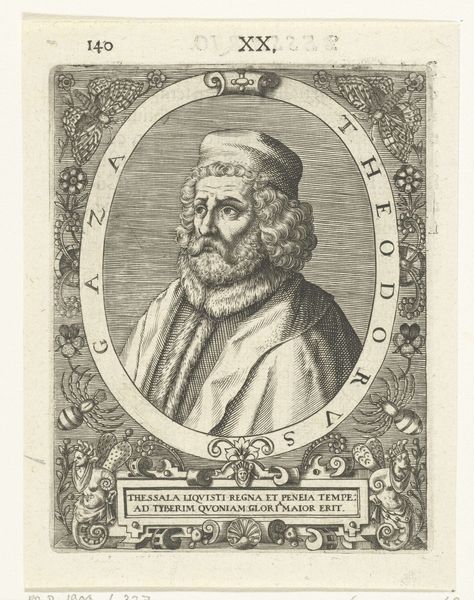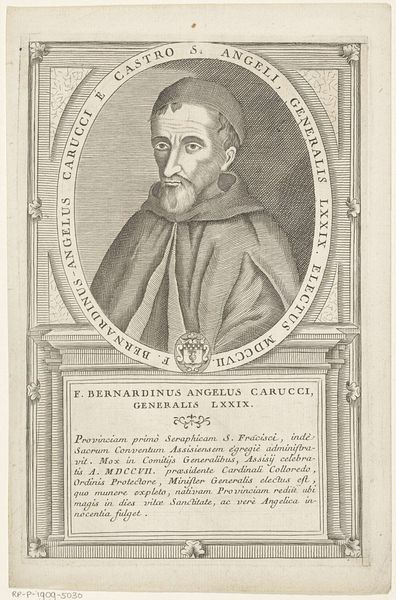
graphic-art, print, engraving
#
portrait
#
graphic-art
# print
#
11_renaissance
#
northern-renaissance
#
engraving
#
realism
Dimensions: height 170 mm, width 120 mm
Copyright: Rijks Museum: Open Domain
Philips Galle created this engraving, titled "Portret van Johannes Crato," sometime between 1537 and 1612. It offers us a glimpse into the world of 16th-century European intellectual life. Johannes Crato, whose portrait we see, was a prominent physician and humanist. During this period, the intersection of medicine and humanism was reshaping understandings of the body and health. Galle’s engraving not only captures Crato’s likeness but also speaks to his status and influence. The Latin text accompanying the portrait underscores Crato’s esteemed position as a doctor and advisor to emperors. The artwork provides insight into the construction of identity and status during the Renaissance. The details of Crato’s clothing, like the fur accents and ornate chain, all suggest his high social standing. Through Galle’s skilled engraving, we are invited to consider the relationship between individual achievement, social status, and the power of representation.
Comments
No comments
Be the first to comment and join the conversation on the ultimate creative platform.
